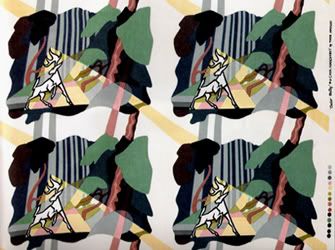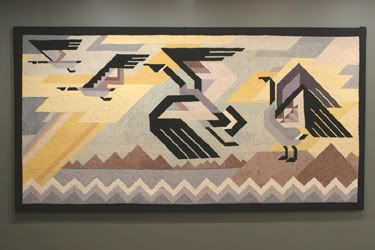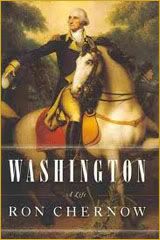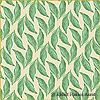Immigrants then, and immigrants now
I am reposting my earlier post on Scandinavian immigrant Thor Hansen, who came to Canada from Denmark in 1928, and later became a pioneer in Canadian textile design.
Immigrants in his era invested and contributed their skills and knowledge much more readily. Perhaps it is because they had no option since there were no multi-culti government organizations to encourage them to stay apart from the main society. I think also they simply wanted to, because the differences they saw here were not that great from the countries they left behind.
Compare and contrast this to contemporary Korean designer Chung-Im Kim, about whom I posted here.
----------------------------------------------------------------
Thor Hansen, Immigrant
Scandinavian spirit, Canadian vision
There were immigrants who psychologically, culturally and personally invested in Canada. They had some understanding of this complex "landscape" - physical and spiritual - that is Canada, and were able to provide their own lasting legacies.
One such was Danish textile designer, Thor Hansen.
From the
Textile Museum of Canada:
Thor Hansen joined the influx of Scandinavian immigrants who spearheaded the craft revival in this country during the first half of the 20th century. Born in a small town outside Copenhagen, his Danish upbringing influenced much of his thinking: folk stories and handicraft were as second nature to him as breathing air. He came to Canada on a whim in 1928 after winning a ticket to Japan, but inspired by Canadian Pacific posters he chose Canada instead.
[H]e believed, "The basement workshop is the greatest blessing of the 20th century." By that he meant, not only is homespun craft good for the soul but it stimulates an appetite for Canadian culture. In 1948, he began a long and fruitful relationship with the newly established Simcoe County Arts and Crafts Association (SCACA), located in Ontario’s Georgian Bay area.
Hansen often remarked that, "Culture is one of the most burning subjects of the day in Canada."
What the Group of Seven did for Canadian painting, Hansen wanted to do for Canadian handicraft. His high regard for the Group of Seven is not surprising given that members of the Group saw parallels between the Canadian and Scandinavian wilderness.
[Hansen] showed a keen eye for repetition and rhythm and favoured a strong art deco style and developed a repertoire of motifs that he would use time and again: silhouettes and profiles of birds in flight, leaping salmon, and horned animals, as well as indigenous wildflowers and plants, especially trillium, lady’s slipper and morning glory.



















